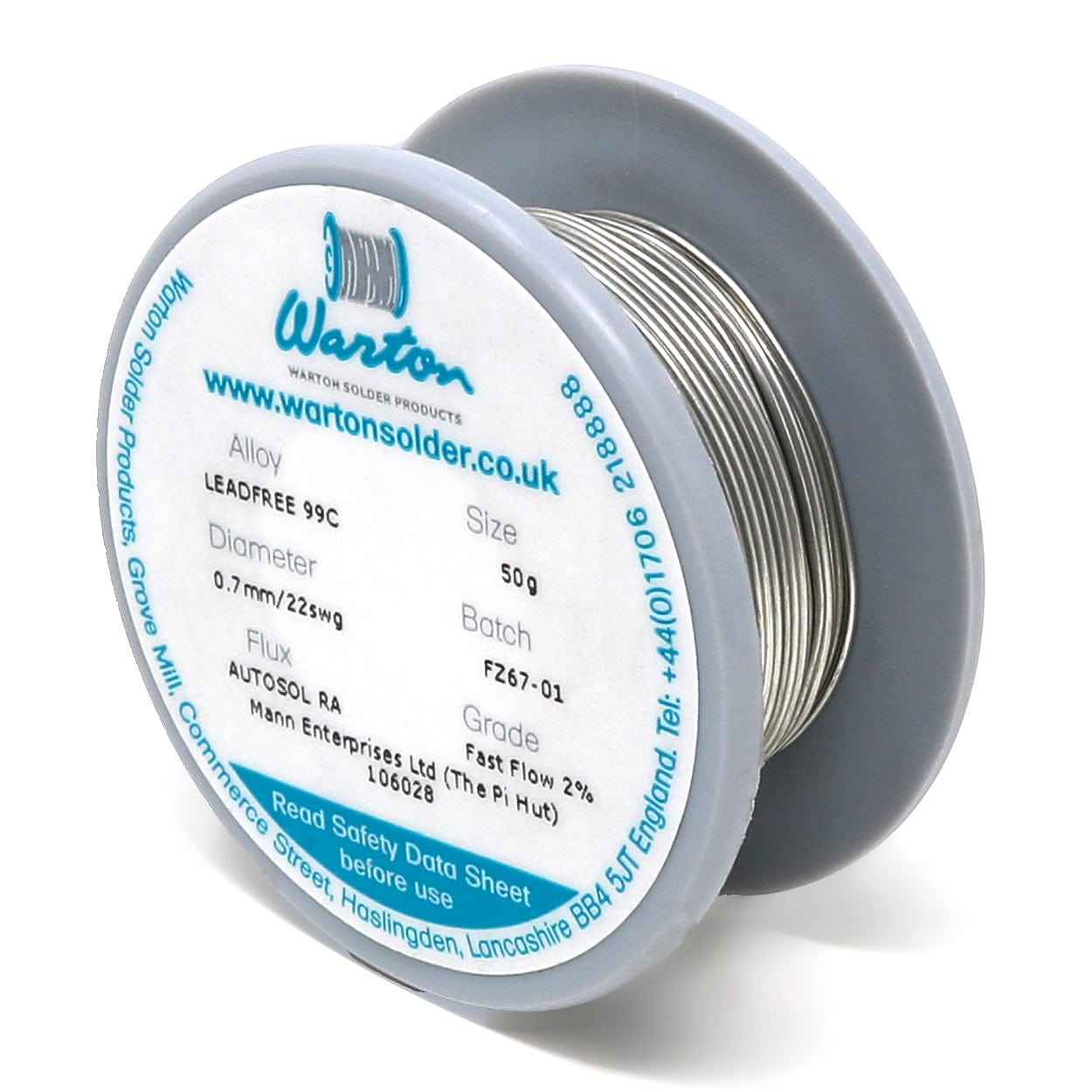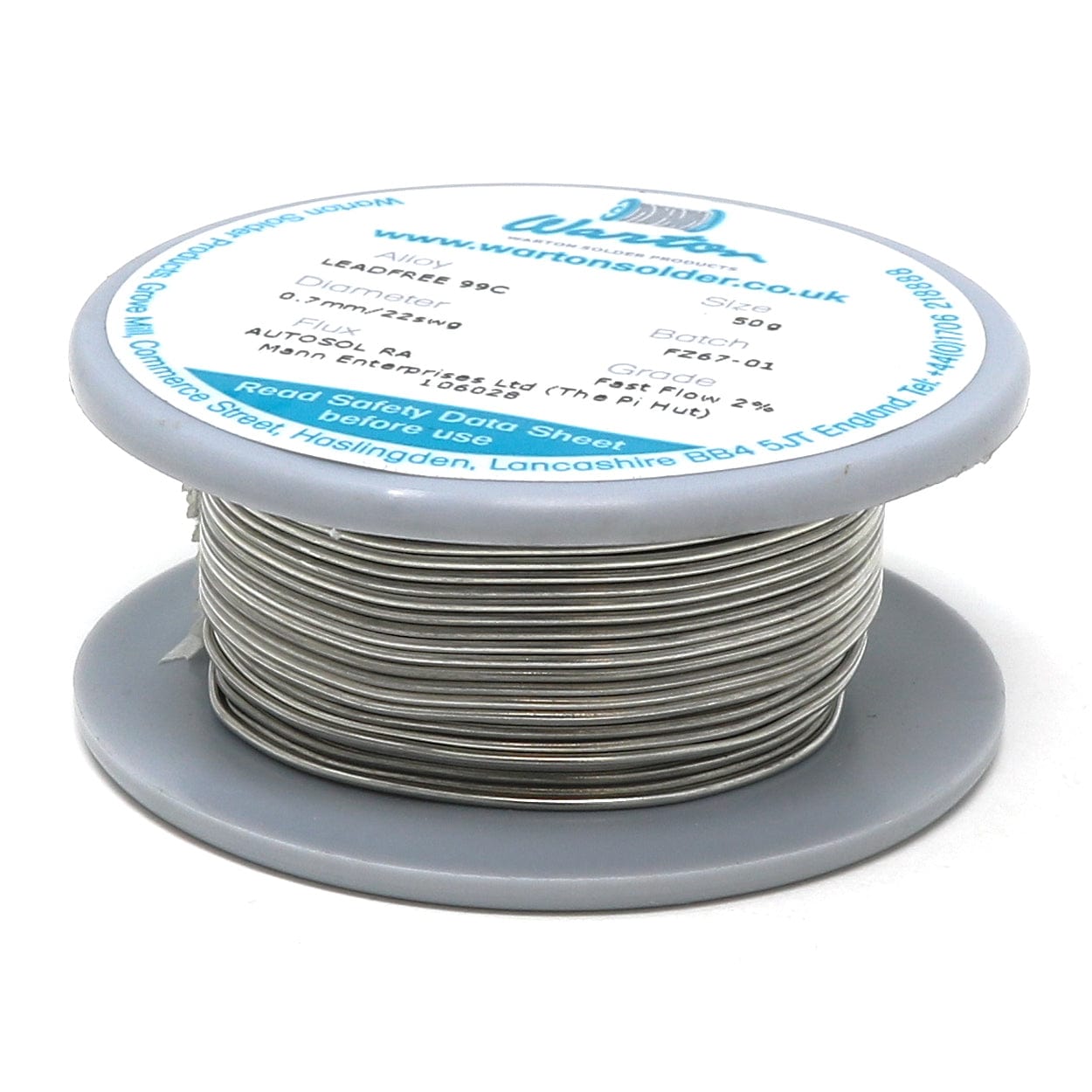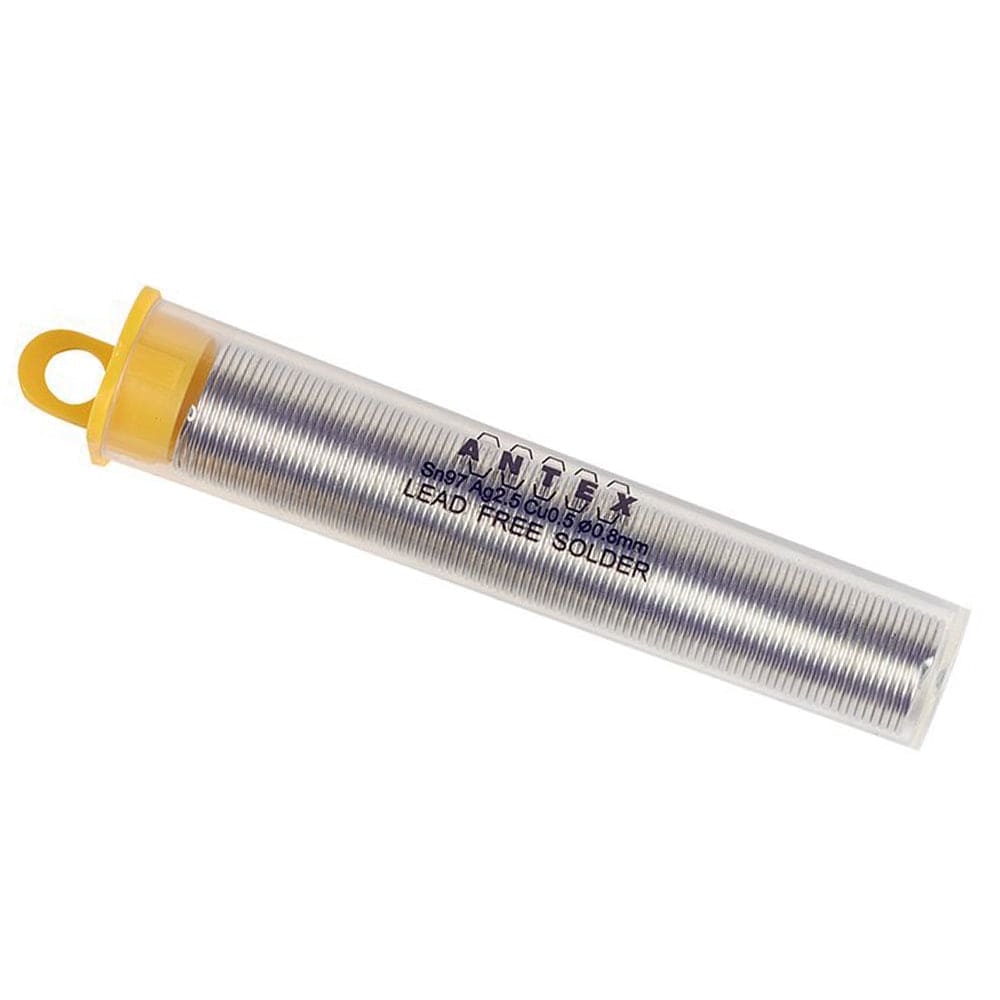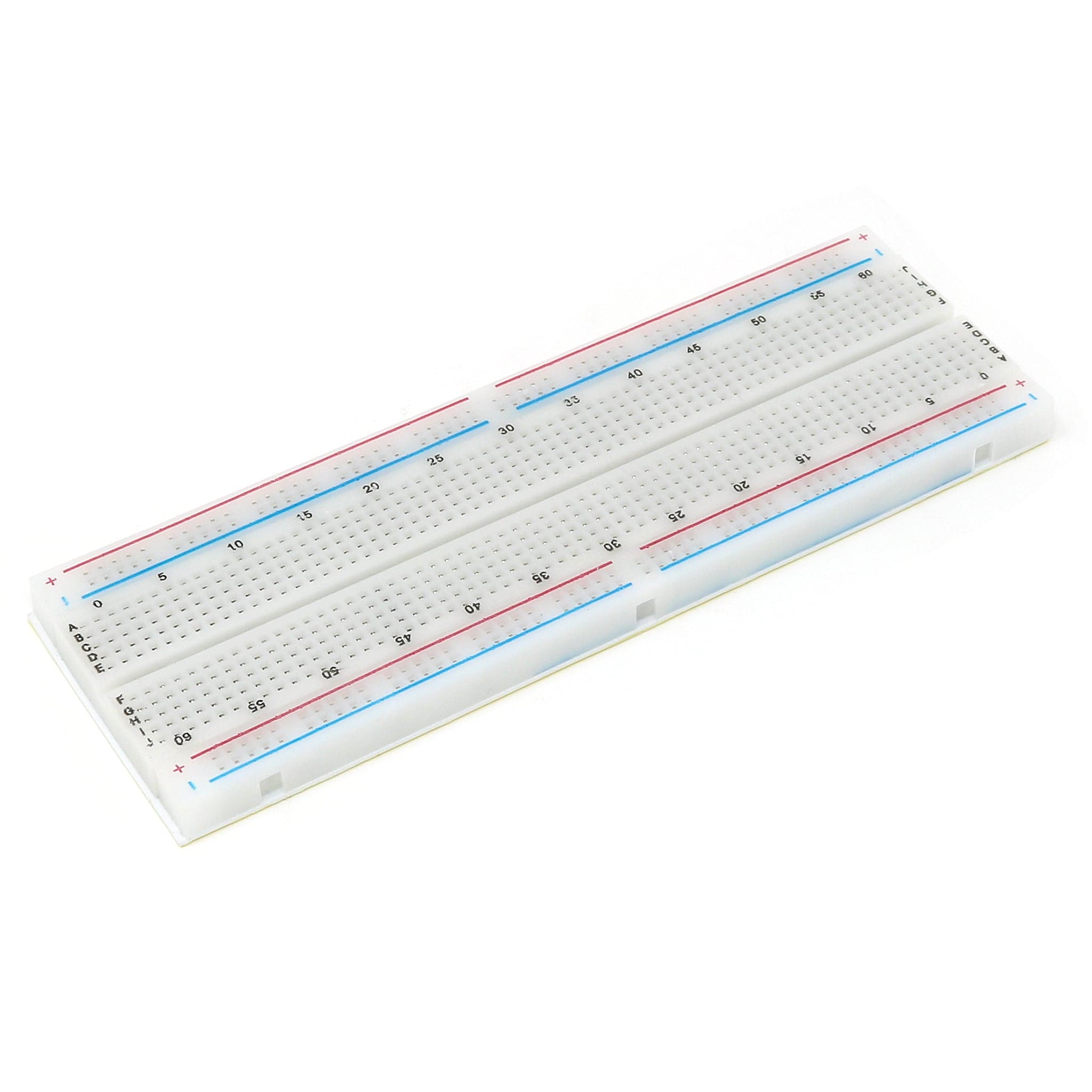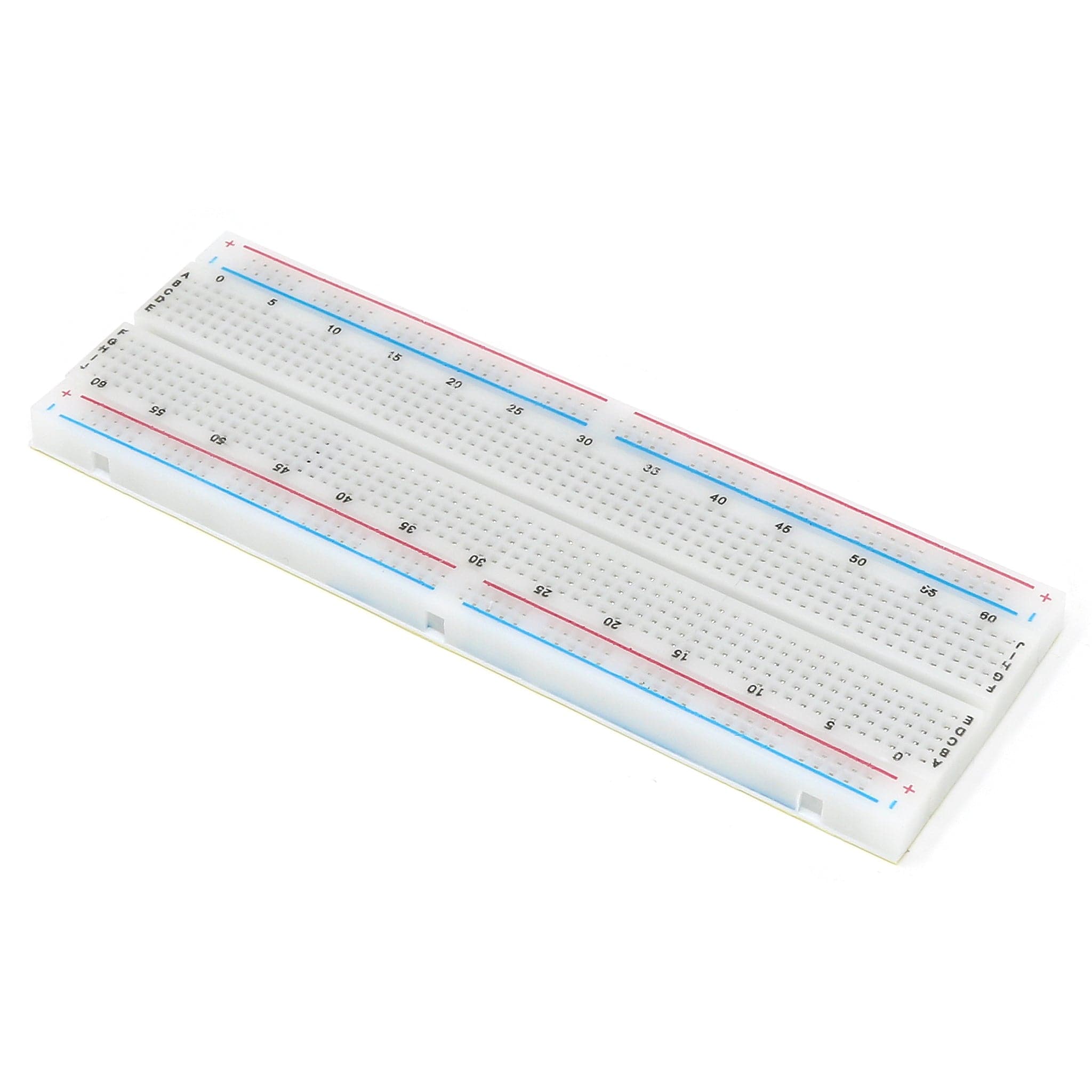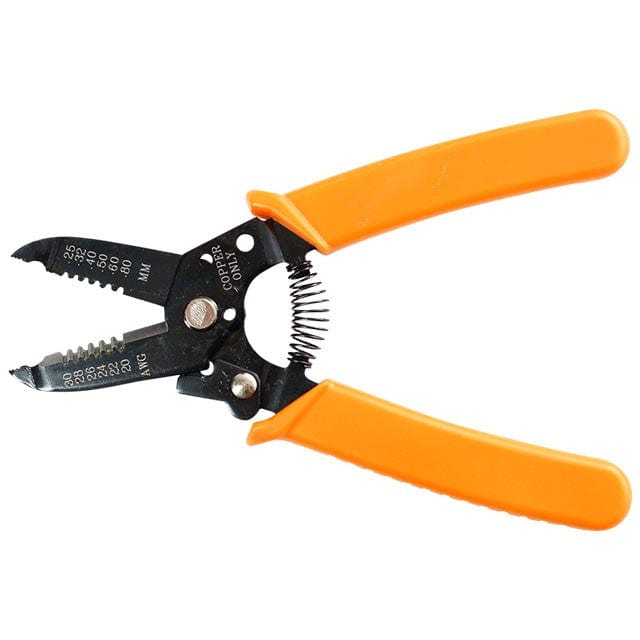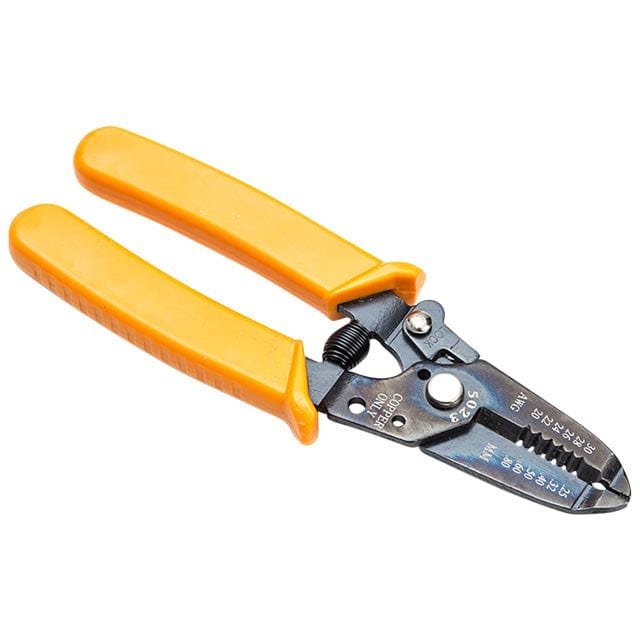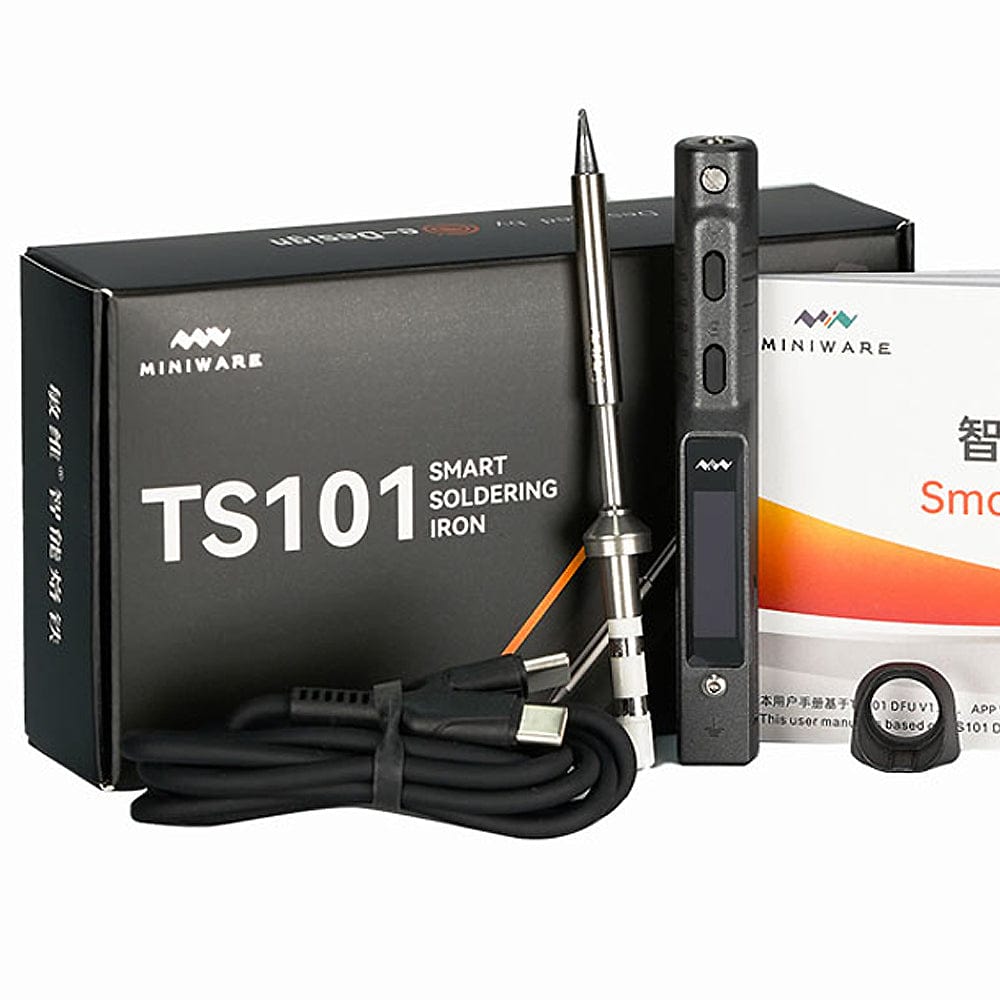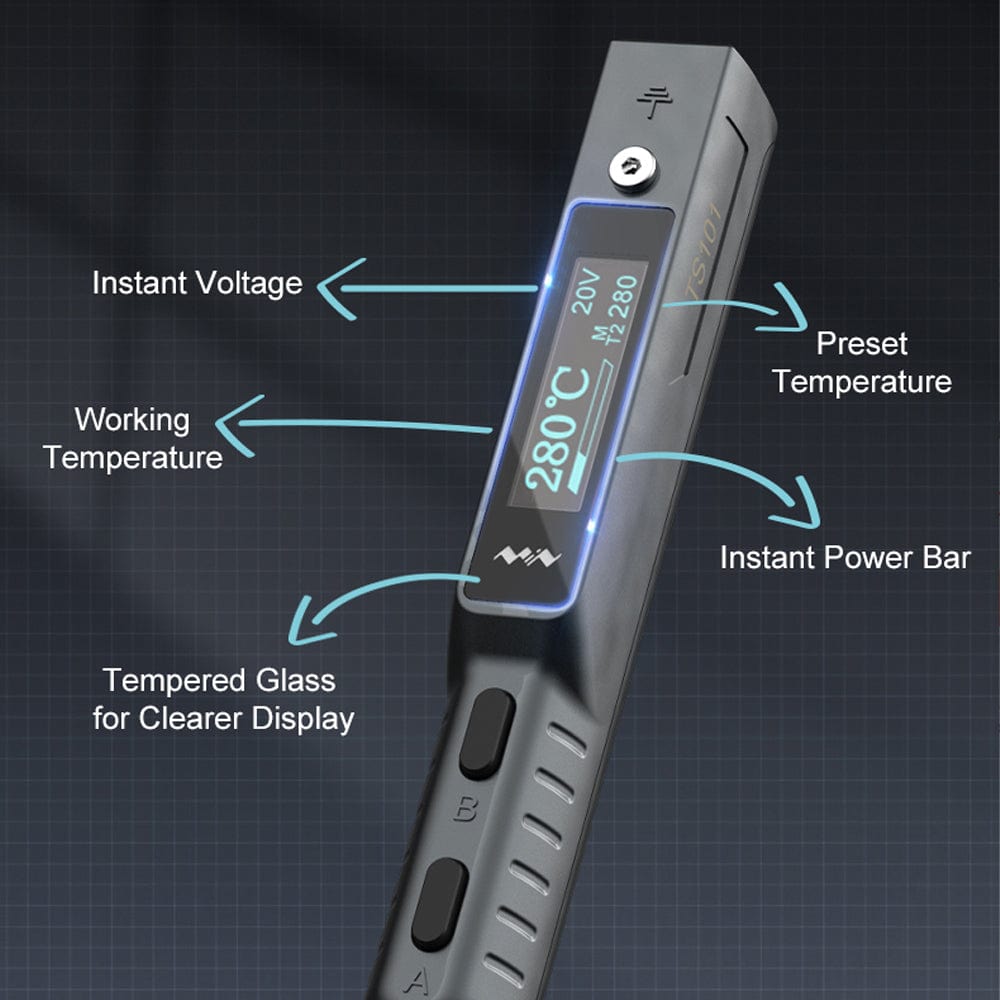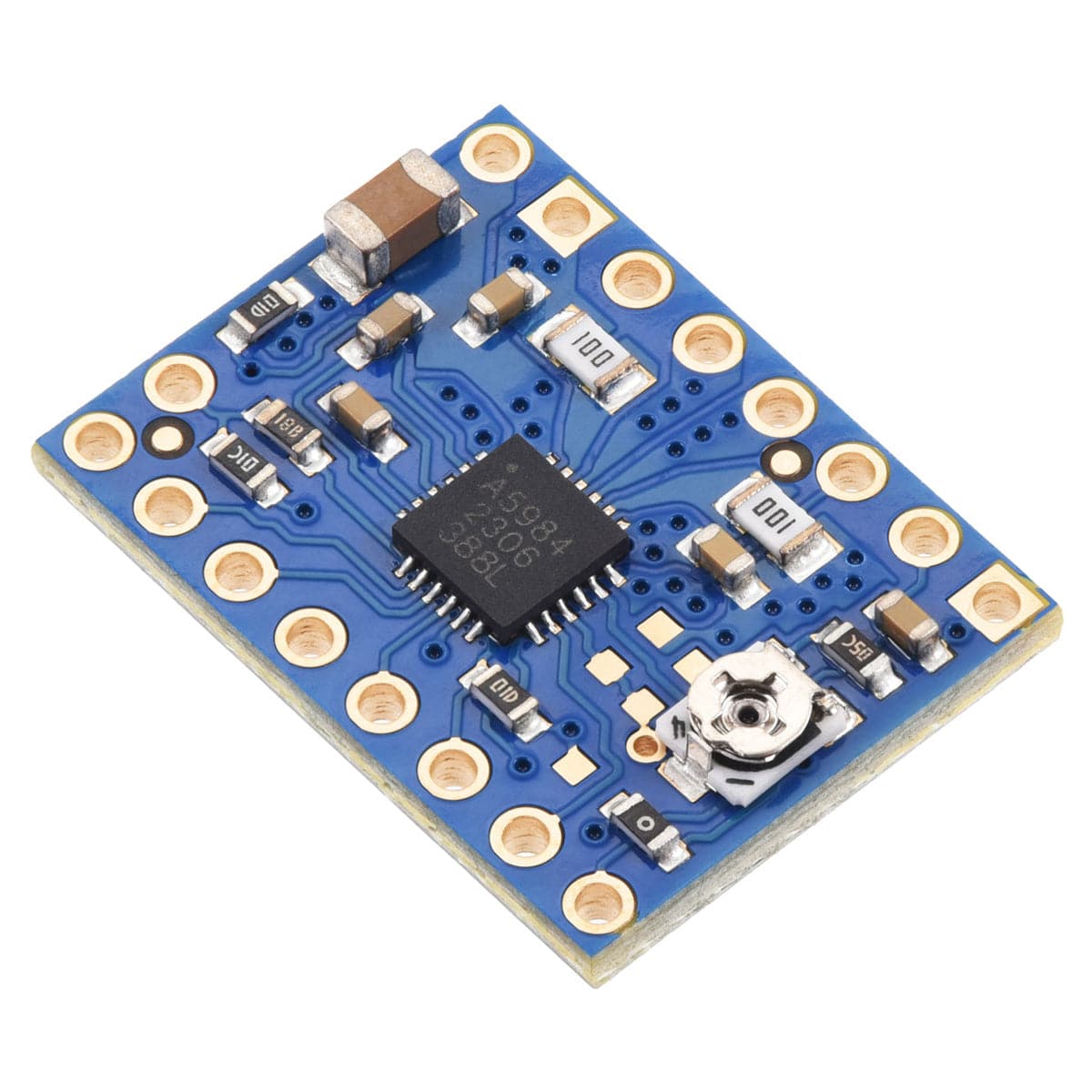
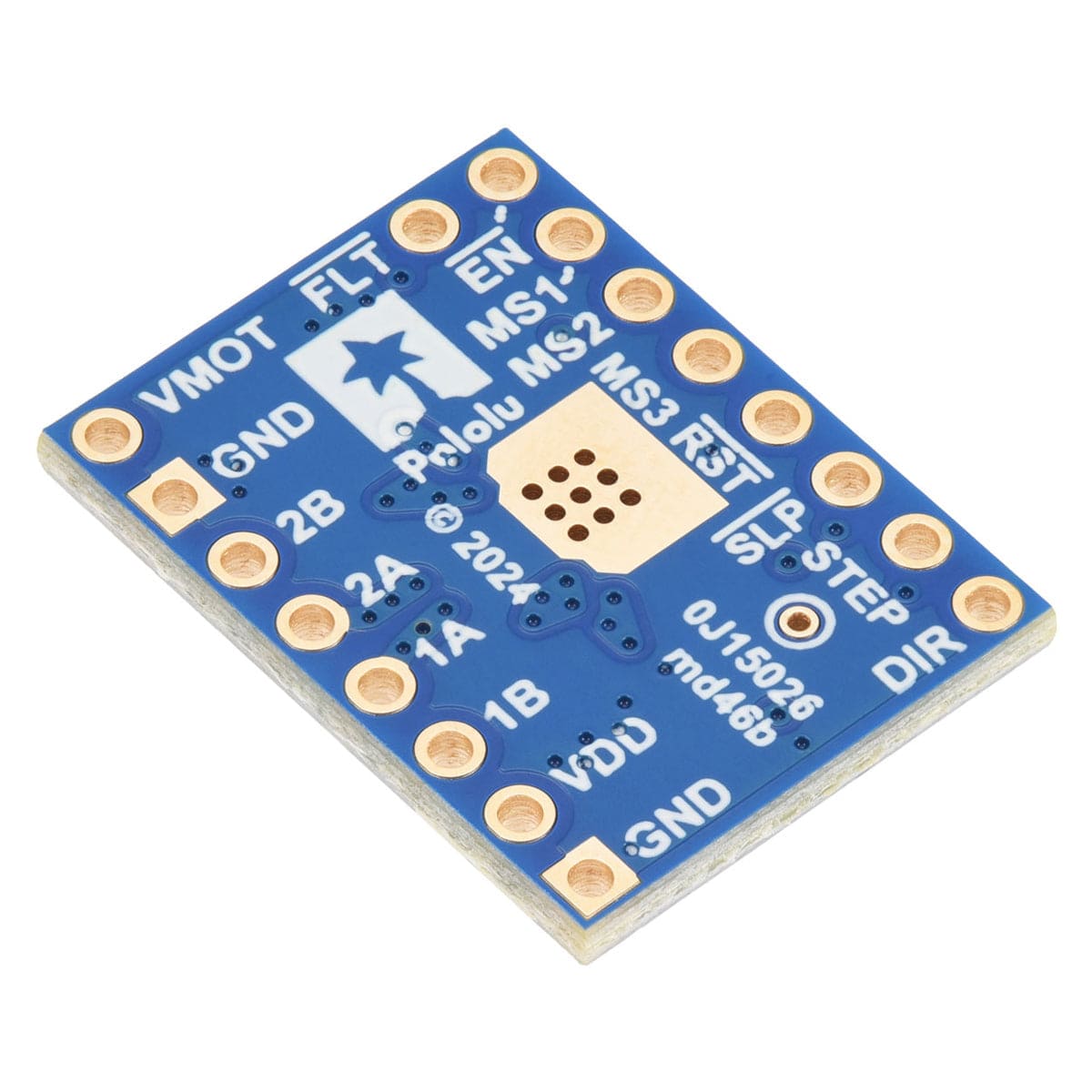
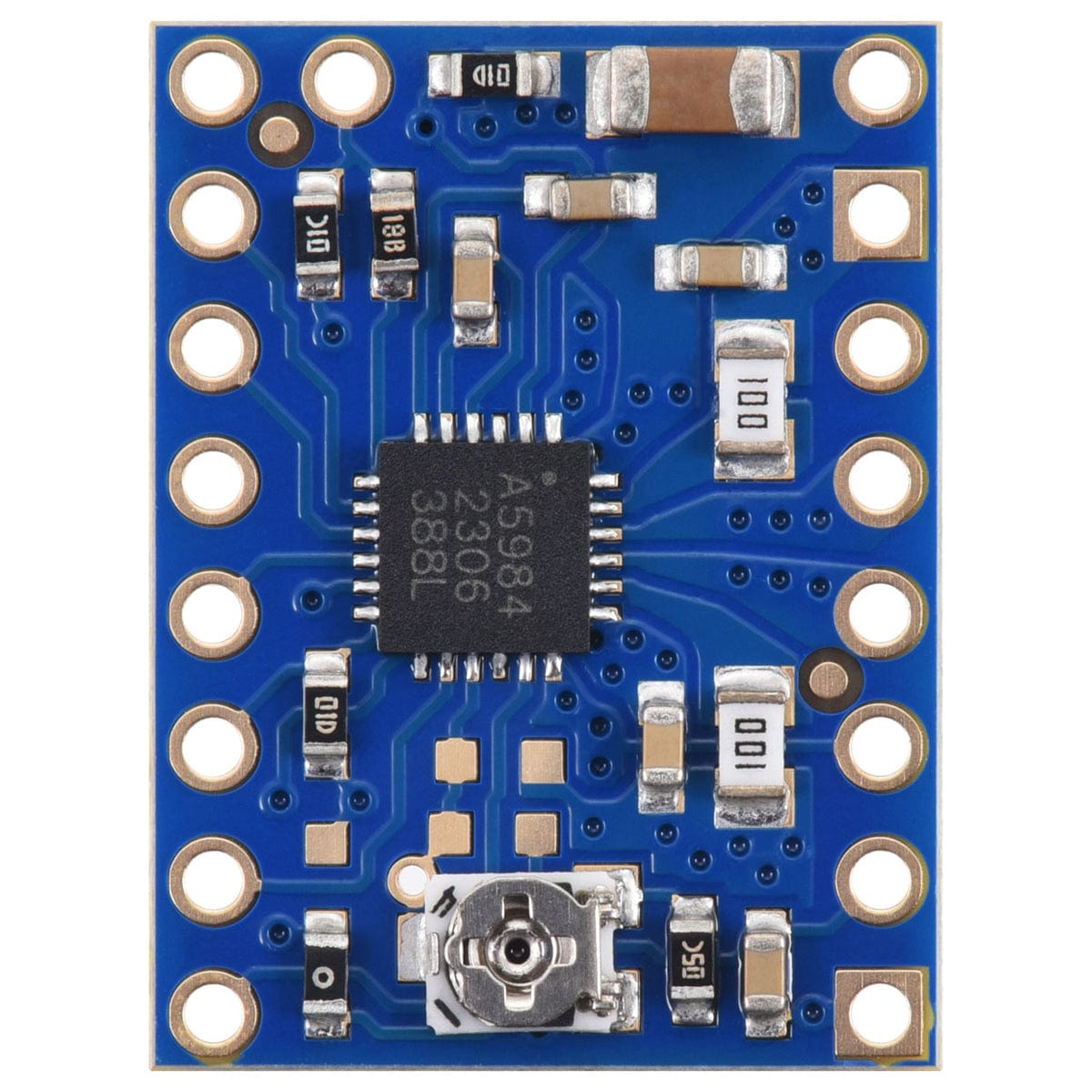
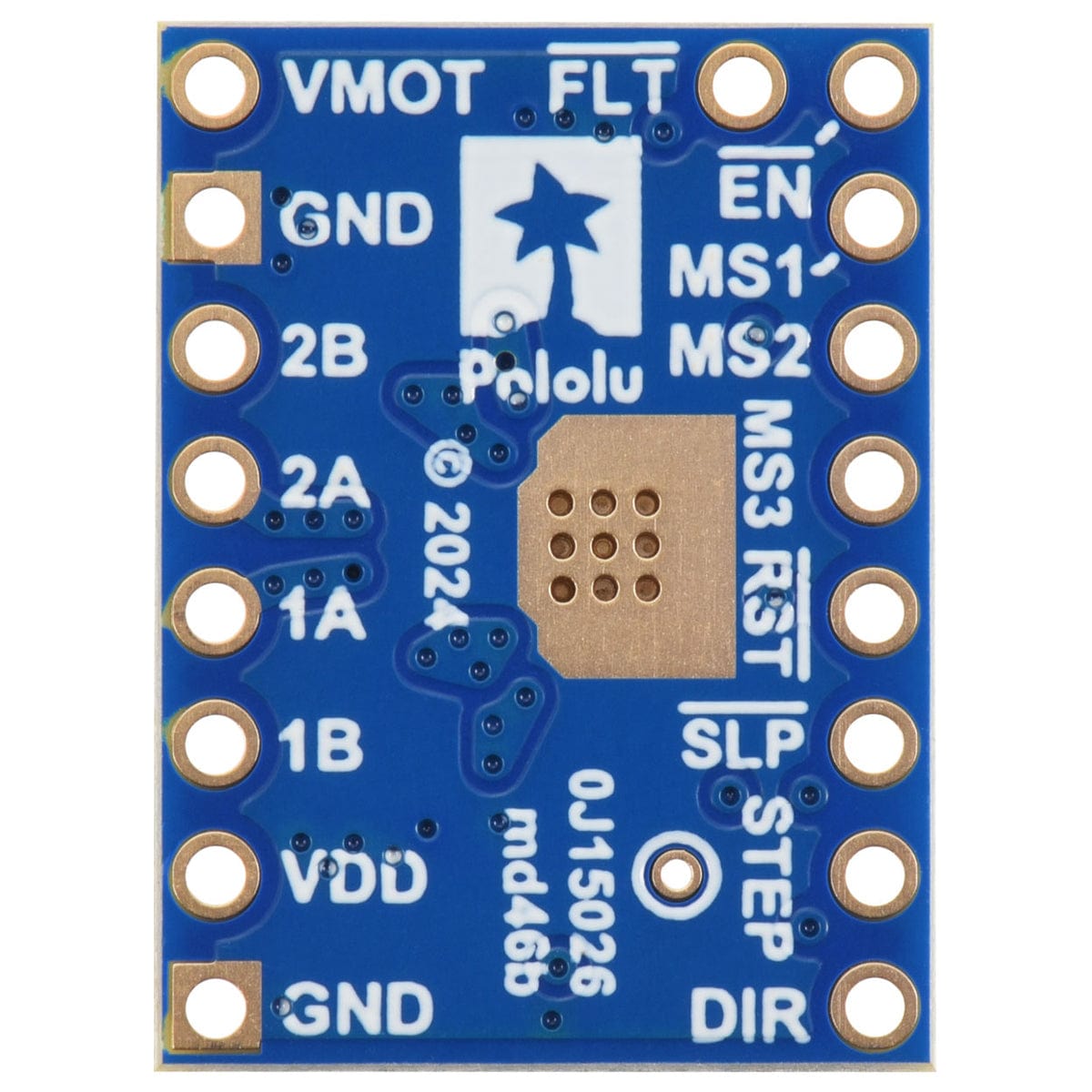
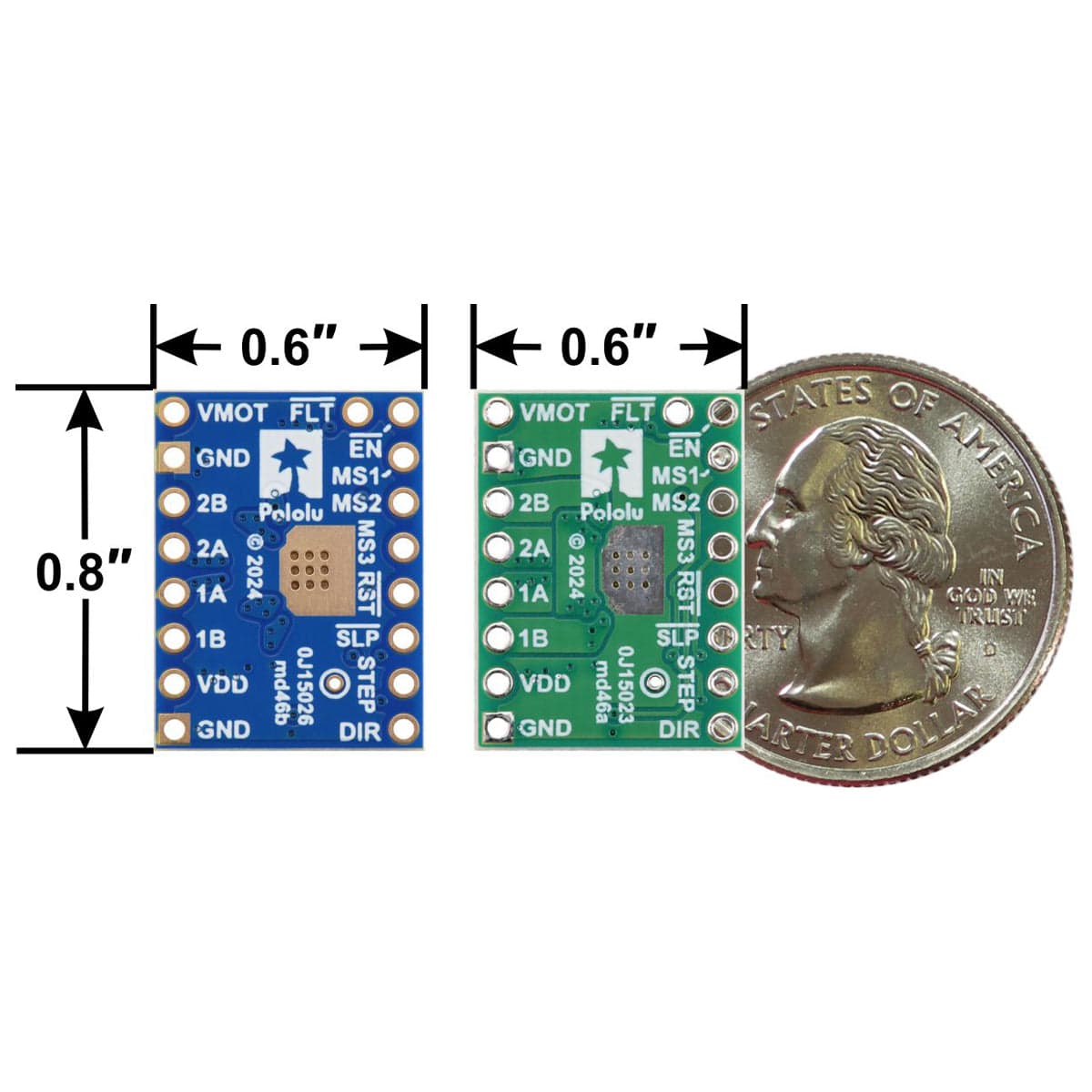
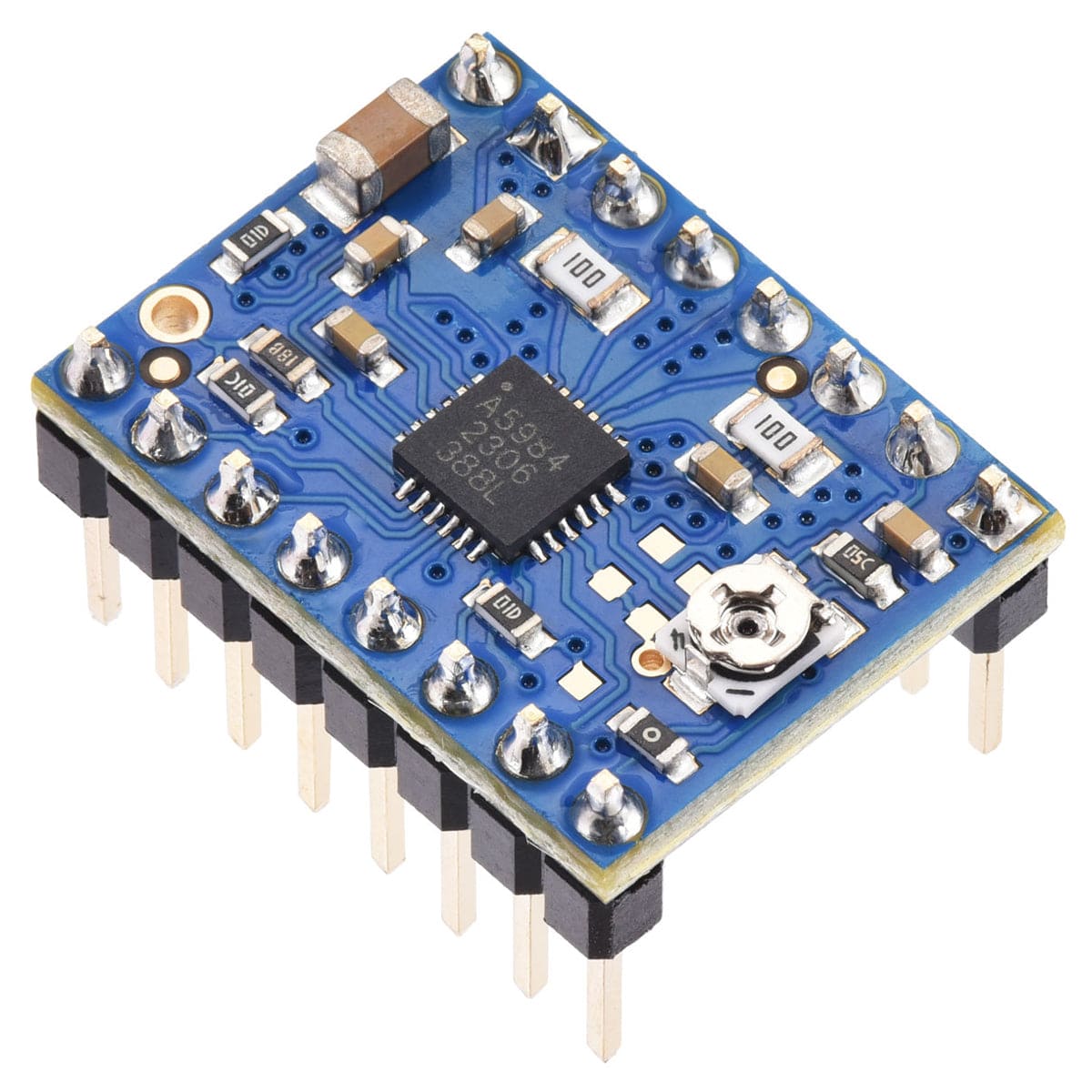
Login / Signup
Cart
Your cart is empty






This is a Pololu carrier board for Allegro’s A5984 microstepping bipolar stepper motor driver. It offers eight different microstep resolutions (down to 1/32-step) and has over-current and over-temperature protection, and it features an adaptive decay algorithm that automatically optimizes the motor current waveform.
This version has an adjustable current limit that can be set with an on-board potentiometer and a four-layer PCB for better thermal performance, allowing it to deliver up to approximately 1.2 A continuous per phase without a heat sink or forced air flow (2 A peak).
We are offering these carrier boards with support from Allegro Microsystems as an easy way to control bipolar stepper motors using their A5984 DMOS Microstepping Driver with Translator and Overcurrent Protection; we therefore recommend careful reading of the A5984 datasheet before using this product.
We offer this carrier with, or without, headers pre-soldered - please select an option before adding to cart. This product ships with all surface-mount components - including the A5984 driver IC - installed as shown in the product picture.
Warning: This product can get hot enough to burn you long before the chip overheats. Take care when handling this product and other components connected to it.
| Minimum operating voltage | 8V |
| Maximum operating voltage | 40V |
| Continuous current per phase with VDD=5V | 1.2A |
| Continuous current per phase with VDD=3.3V | 2A |
| Minimum logic voltage | 2.5V |
| Maximum logic voltage | 5.5V |
| Microstep resolutions | Full with 100% current full with 70% current non-circular 1/2, 1/2, 1/4, 1/8, 1/16, 1/32 |
| Current limit | Adjustable (pot), 1.2A max continuous |
| Reverse voltage protection? | N |
| Header pins | Not included |
| Size | 0.6″ × 0.8″ |
| Weight | 1.4 g |

The driver requires a motor supply voltage of 8 V to 40 V (absolute max) to be connected across VMOT and GND. This supply should be capable of delivering the expected stepper motor current.
Four, six, and eight-wire stepper motors can be driven by the A5984 if they are properly connected; an FAQ answer on the Pololu website explains the proper wirings in detail.
Warning: Connecting or disconnecting a stepper motor while the driver is powered can destroy the driver. (More generally, rewiring anything while it is powered is asking for trouble.)
Stepper motors typically have a step size specification (e.g. 1.8° or 200 steps per revolution), which applies to full steps. A microstepping driver such as the A5984 allows higher resolutions by allowing intermediate step locations, which are achieved by energizing the coils with intermediate current levels. For instance, driving a motor in quarter-step mode will give the 200-step-per-revolution motor 800 microsteps per revolution by using four different current levels.
The resolution (step size) selector inputs (MS1, MS2, and MS3) enable selection from the eight step resolutions according to the table below. The driver defaults to full step with 100% current. For the microstep modes to function correctly, the current limit must be set low enough (see below) so that current limiting gets engaged. Otherwise, the intermediate current levels will not be correctly maintained, and the motor will skip microsteps.
| MS1 | MS2 | MS3 | Microstep Resolution |
| Low | Low | Low | Full step with 100% current |
| Low | Low | High | Half step with 100% current (also called non-circular half step) |
| Low | High | Low | 1/16 step |
| Low | High | High | 1/32 step |
| High | Low | Low | Modified full step (71% current) |
| High | Low | High | Modified half step (circular) |
| High | High | Low | 1/4 step |
| High | High | High | 1/8 step |
The rising edge of each pulse to the STEP input corresponds to one microstep of the stepper motor in the direction selected by the DIR pin. Note that the STEP and DIR pins are not pulled to any particular voltage internally, so you should not leave either of these pins floating in your application. If you just want rotation in a single direction, you can tie DIR directly to VDD or GND.
The chip has thee different inputs for controlling its power states: RESET, SLEEP, and ENABLE. The RESET pin (RST) is floating by default; this pin must be high to enable the driver (it can be connected to the adjacent SLEEP pin or directly to a logic “high” voltage between 2 V and 5.5 V, or it can be dynamically controlled from a digital output of an MCU). The default state of the SLEEP (SLP) and ENABLE (EN) pins is to enable the driver (the carrier board pulls SLEEP up to VDD and pulls ENABLE down to GND). See the datasheet for more details.
The A5984 also features an open-drain FAULT (nFAULT) output that drives low whenever the driver detects an over-current fault. The carrier board pulls this pin up to VDD, so no external pull-up is necessary on the FAULT pin. Bringing RESET or SLEEP low clears a latched fault.
To achieve high step rates, the motor supply is typically higher than would be permissible without active current limiting. For instance, a typical stepper motor might have a maximum current rating of 1 A with a 5 Ω coil resistance, which would indicate a maximum motor supply of 5 V. Using such a motor with 9 V would allow higher step rates, but the current must actively be limited to under 1 A to prevent damage to the motor.
The A5984 supports such active current limiting, and the trimmer potentiometer on the board can be used to set the current limit. You will typically want to set the driver’s current limit to be at or below the current rating of your stepper motor. One way to set the current limit is to put the driver into full-step 100% current mode and to measure the current running through a single motor coil without clocking the STEP input.
Another way to set the current limit is to measure the VREF (REF) voltage and calculate the resulting current limit. The VREF pin voltage is accessible via a small hole that is circled on the bottom silkscreen of the circuit board, as shown in the picture on the right. The current limit in amps relates to the reference voltage in volts as follows:
Current Limit = VREF / 1.25
So, the current limit in amps (A) is equal to VREF in volts (V) multiplied by 1.25, and if you have a stepper motor rated for 1 A, for example, you can set the current limit to about 1 A by setting the reference voltage to about 0.8 V.
Please note that VREF is a function of the logic voltage, VDD, which supplies the potentiometer circuit used to set the driver’s current limit, so you will need to adjust the current limit again if you ever change VDD. The maximum current limit setting possible with the on-board potentiometer is also proportional to VDD. With a VDD of 3.3 V, the maximum settable current limit is typically about 2 A; lower VDD voltages will reduce the maximum settable current limit correspondingly.
Note: The coil current can be very different from the power supply current, so you should not expect the current measured at the power supply to match the current limit. The appropriate place to put your current meter is in series with one of your stepper motor coils. If the driver is in full-step 100% current or full-step 71% current modes, both coils will always be on and limited to 100% or 71% of the current limit setting, respectively. If your driver is in one of the microstepping modes, the current through the coils will change with each step, ranging from 0% to 100% of the set limit. See the A5984 datasheet for more information.
The A5984 carrier has a maximum current rating of 2 A per coil, but the actual current you can deliver depends on how well you can keep the IC cool. The carrier’s printed circuit board is designed to draw heat out of the IC, but to supply more than approximately 1.2 A per coil, a heat sink or other cooling method is required.
Warning: This product can get hot enough to burn you long before the chip overheats. Take care when handling this product and other components connected to it.
Please note that measuring the current draw at the power supply will generally not provide an accurate measure of the coil current. Since the input voltage to the driver can be significantly higher than the coil voltage, the measured current on the power supply can be quite a bit lower than the coil current (the driver and coil basically act like a switching step-down power supply). Also, if the supply voltage is very high compared to what the motor needs to achieve the set current, the duty cycle will be very low, which also leads to significant differences between average and RMS currents.
Additionally, please note that the coil current is a function of the set current limit, but it does not necessarily equal the current limit setting as the actual current through each coil changes with each microstep.







